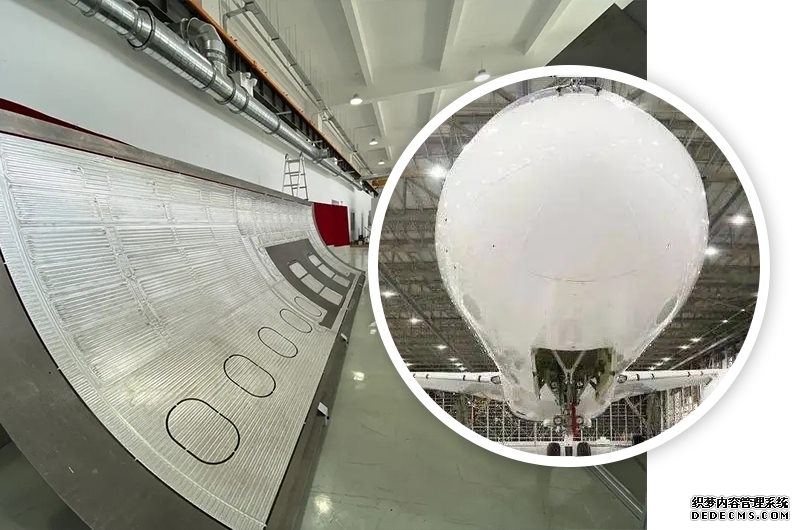On the basis of 2A12 alloy, it is a new type of high-purity aluminum alloy developed by reducing the content of harmful impurity elements such as Fe and Si, and adjusting and optimizing the content of main alloy elements such as Cu and Mg.
2E12 aluminum alloy is a new type of alloy with high damage tolerance and is considered to be a new generation of aircraft. Preferred materials for skins.

2 series aluminum alloy is aluminum copper alloy, and its corrosion resistance is slightly weak. In order to improve its corrosion resistance and prolong its service life, a layer of pure aluminum is usually coated on the surface of the sheet, which can provide corrosion protection for the matrix material. In addition, the aluminum clad layer contains less intermetallic compounds, which will further prevent local corrosion of the material. At the same time, sulfuric acid anodizing treatment should be carried out in the manufacturing process of parts, which can form an anodic oxide film on the surface of aluminum alloy to further improve the corrosion resistance of aluminum alloy.
2E12 aluminum alloy sheet has high Cu content, and the main strengthened alloy phase is also Cu containing phase. However, in the process of anodic oxidation, Cu will be enriched at the interface between the substrate and the oxide film, and then Cu will be oxidized, and the gas will escape, making the formed oxide film have defects, resulting in the decline of hardness, corrosion resistance and mechanical properties of the oxide film. The 2014-T6 aluminum alloy was anodized with sulfuric acid, and 5, 10 and 15 were prepared on the alloy surface μ M. The results show that when the oxide film on the alloy surface is thick, cracks will appear in the oxide film. Under the action of medium and low stress, anodizing treatment will greatly reduce the bending fatigue properties of aluminum alloy; However, under high stress, the effect of anodizing on the bending fatigue properties of aluminum alloy is not obvious. When the oxide film on the surface of aluminum alloy is thin, the fatigue crack originates from the oxide film surface; When the oxide film is thick, the fatigue crack originates from the surface of aluminum alloy matrix. The effects of sulfuric acid adipic acid anodizing, sulfuric acid anodizing and chromic acid anodizing on the fatigue properties of LY12CZ aluminum alloy rolled plates were studied. The results show that anodizing will reduce the fatigue life of aluminum alloy, among which the traditional sulfuric acid anodizing process has the greatest impact, while chromic acid anodizing has the least impact; After adipic acid is added to sulfuric acid electrolyte, the size of pores and defects in the oxide film is reduced, which inhibits the initiation of fatigue cracks to a certain extent, thereby improving the fatigue life.
The alloy phase in
2E12 aluminum alloy will be dissolved in a large amount during the anodic oxidation process, resulting in large holes evenly distributed on the alloy surface and tensile stress in the film. These defects will become the source of cracks under the external fatigue load, which will lead to the decline of fatigue performance. The fatigue life of 2E12 aluminum alloy with aluminum clad layer removed and with aluminum clad layer decreased significantly after sulfuric acid anodizing. The fatigue life of 2E12 aluminum alloy with aluminum clad layer removed decreased significantly due to the more number and size of surface holes after anodizing.
(1) After removing the aluminum clad layer and
2E12 aluminum alloy sheet with aluminum clad layer, the surface can form a dense anodic oxide film with protective properties after sulfuric acid anodic oxidation treatment for different times. 2E12 aluminum alloy anodic oxide film with aluminum coating grows faster and has a larger thickness.
(2) There are a lot of holes in the anodic oxidation film on the surface of the two aluminum alloys, and with the extension of anodic oxidation time, the size and quantity gradually increase. Since the
2E12 aluminum alloy matrix with aluminum clad layer removed contains Cu rich second phases, these second phases are dissolved in the anodic oxidation process, which significantly increases the number and size of holes in the film.
(3) The tensile properties of
2E12 aluminum alloy with aluminum coating removed and with aluminum coating treated by sulfuric acid anodizing remained stable, but the fatigue life decreased significantly. After anodizing treatment, the fatigue fracture surface shows the characteristics of multiple crack sources. The number and size of holes on the alloy surface with aluminum clad layer removed are more, the fatigue crack is easier to initiate and expand, and the fatigue life decreases more.





